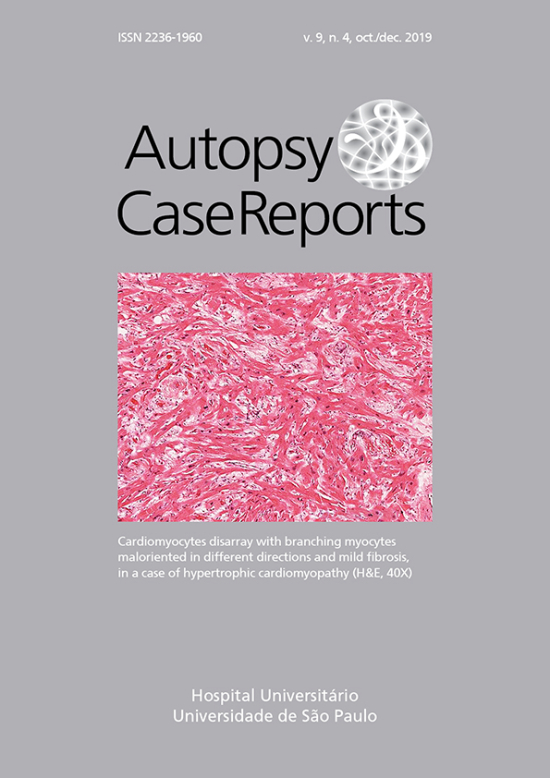Progressive dyspnea and a right atrial mass in an 80-year-old man
DOI:
https://doi.org/10.4322/acr.2019.135Keywords:
Carcinoma, Hepatocellular, Embolism, Liver Neoplasms, Budd-Chiari SyndromeAbstract
Hepatocellular carcinoma (HCC) is among the five most frequent causes of cancer death worldwide, according to the WHO. The disease is related to alcohol abuse, viral infections, and other causes of cirrhosis, and unfortunately, in some developed countries, the incidence shows an increasing trend. Although the diagnosis of the HCC often relies upon the context of a chronic hepatopathy, some cases may present a silent course, and the initial symptoms ensue when the disease is in an advanced stage with no chance for any therapeutic attempt. The clinical picture of the HCC is varied, and unexpected forms may surprise the clinician. One of the unusual presentations of the HCC is shock by the blockage of the venous return to the right atrium by the inferior vena cava infiltration. Herein we present a case of an old patient who sought medical care complaining of dyspnea. The clinical workup disclosed a right thorax pleural effusion and imaging exams depicted a mass in the right hepatic lobe, invasion of the inferior vena cava (IVC) and the right atrium (RA). During the attempts of clinical investigation, the patient passed away. The autopsy disclosed an HCC involving the right hepatic lobe, with the invasion of the IVC and the RA. The authors highlight the importance of recognizing the bizarre presentation of not so rare diseases.
Downloads
Published
Issue
Section
License
Copyright
Authors of articles published by Autopsy and Case Report retain the copyright of their work without restrictions, licensing it under the Creative Commons Attribution License - CC-BY, which allows articles to be re-used and re-distributed without restriction, as long as the original work is correctly cited.



